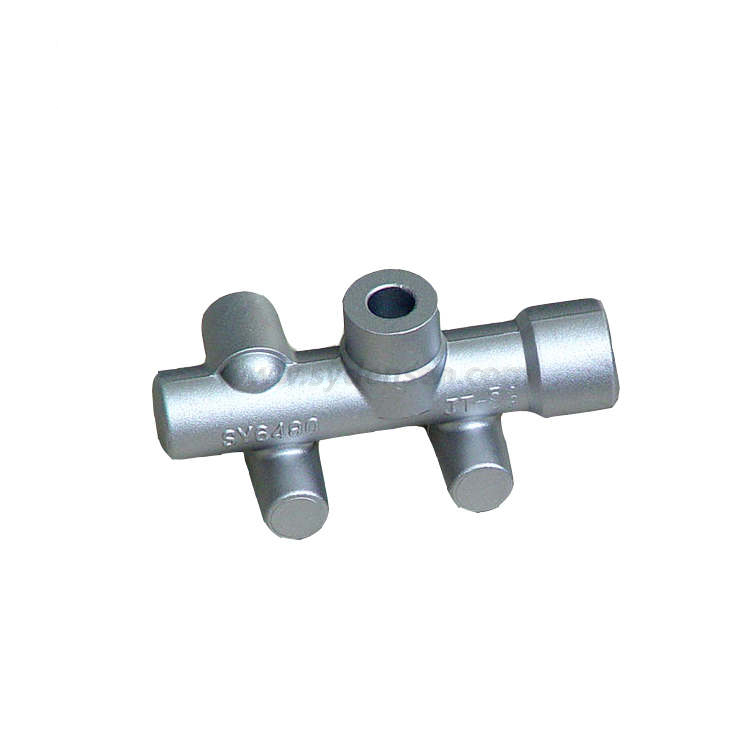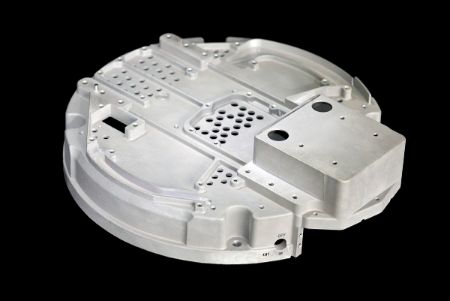Aluminum Casting Explained: Secret Facts and Insights for Industry Professionals
Aluminum casting acts as an important procedure in contemporary manufacturing, shaping components throughout numerous markets. Its diverse techniques, such as sand and die casting, satisfy various production requirements. The unique buildings of aluminum alloys improve their applicability, yet challenges remain in preserving high quality and performance. Recognizing these elements is necessary for industry experts. What are the current advancements and best practices that can further optimize this procedure?
Review of Aluminum Casting Processes

Key aspects of aluminum casting procedures include the preparation of molds, which might be made from sand, steel, or ceramic products, depending on the meant usage. Furthermore, temperature control is crucial to guarantee proper melting and solidification of aluminum.
The casting procedure enables intricate layouts and can achieve high degrees of dimensional precision. When cooled, the castings might go through ending up procedures such as machining or surface therapy to meet details efficiency requirements. In general, aluminum casting serves as a functional production technique, effectively fulfilling the diverse needs of different industries.
Kinds Of Aluminum Casting Methods
In the domain name of aluminum casting, different approaches are utilized to achieve various results. Sand casting methods offer adaptability and cost-effectiveness for complicated forms, while die casting processes use high accuracy and effectiveness for automation. Understanding these techniques is vital for selecting the proper approach based on task demands.
Sand Casting Strategies
Sand casting techniques stand for a fundamental technique in aluminum casting, where sand is made use of as a mold material to shape liquified steel. This procedure includes producing a pattern from the wanted component, which is then put in a sand blend to create a mold and mildew. The sand is compressed around the pattern, and after removal, it develops a cavity in the shape of the part. Molten aluminum is put right into this cavity, enabling it to cool and strengthen. One considerable benefit of sand casting is its convenience; it can accommodate big components and complicated shapes. In addition, the materials made use of are fairly low-cost, making it an obtainable alternative for different production applications in the aluminum sector.
Die Casting Processes
Die casting procedures are a popular technique for shaping aluminum elements, using high-pressure strategies to force molten metal into specifically crafted mold and mildews. This procedure is especially favored for its ability to create complicated shapes with tight tolerances and a smooth finish. There are 2 key sorts of die casting: hot chamber and cold chamber. Hot chamber die casting is suitable for metals with reduced melting factors, enabling faster manufacturing prices. On the other hand, chilly chamber die casting is perfect for greater melting factor metals, requiring a different melting heating system. Both approaches improve effectiveness and decrease material waste, making them important in automotive, aerospace, and durable goods markets. Recognizing these procedures assists experts select one of the most ideal method for their particular applications.
Material Properties of Aluminum Alloys

Toughness and Durability
Stamina and longevity are critical qualities of aluminum alloys that make them ideal for different casting applications. These materials exhibit a beneficial strength-to-weight ratio, permitting the production of lightweight yet durable components. With respect to tensile stamina, specific aluminum alloys can be engineered to endure substantial lots without flawing. This property is specifically important in industries such as aerospace and auto, where performance and safety are paramount. Additionally, aluminum alloys typically maintain their mechanical properties under diverse temperature level problems, ensuring regular efficiency. The inherent ductility of these alloys likewise enables for efficient shaping during the casting process, making it less complicated to generate complicated geometries. Generally, the stamina and toughness of aluminum alloys contribute significantly to their widespread use in advanced applications.
Corrosion Resistance Characteristics
While aluminum alloys are treasured for their toughness and lightweight homes, their rust resistance is one more vital characteristic that boosts their viability for different applications. Aluminum normally creates a protective oxide layer when exposed to dampness, which assists to avoid further oxidation. This intrinsic home makes aluminum alloys particularly beneficial in atmospheres prone to deterioration, such as marine and industrial setups. Additionally, different alloy make-ups can influence resistance degrees, with certain alloys especially engineered to improve this particular. Therapies like anodizing can additionally improve rust resistance by thickening the oxide layer. Recognizing the deterioration resistance of aluminum alloys is important for sector professionals when choosing products for projects needing resilience and durability in tough atmospheres.
Advantages of Aluminum Casting in Manufacturing
Aluminum casting offers numerous benefits in manufacturing, making it a favored choice for numerous industries. One considerable advantage is its light-weight nature, which adds to decreased transport prices and enhanced energy performance in end items. Furthermore, aluminum's exceptional thermal and electric conductivity boosts capability in applications website link requiring warm dissipation or electric conduction.
The product's capacity to be cast right into elaborate shapes enables for style versatility, decreasing the requirement for additional machining processes. On top of that, aluminum casting shows premium corrosion resistance, resulting in longer product lifespans and reduced upkeep costs.

Typical Applications of Aluminum Castings
The adaptability of aluminum casting allows its extensive usage throughout various markets. Usual applications include vehicle components, where light-weight and corrosion-resistant components, such as engine blocks and transmission housings, boost vehicle performance. In the aerospace market, aluminum spreadings are utilized for structural elements, providing stamina without including considerable weight.
Furthermore, the electric sector gain from aluminum spreadings in producing enclosures and warmth sinks, where thermal conductivity is necessary. The customer goods sector additionally incorporates aluminum spreadings in items like kitchenware, furnishings, and decorative items, combining visual appeals with functionality.
In addition, her comment is here the building and construction sector utilizes aluminum spreadings for architectural elements, window frames, and fixtures, which give sturdiness and style versatility. On the whole, the varied applications of aluminum spreadings highlight their significance in contemporary manufacturing, adding to improvements in effectiveness and product layout throughout multiple areas.
Advancements and Technological Advancements
As markets proceed to progress, advancements in aluminum casting technology are changing production procedures and item capabilities. Innovations in 3D printing and additive production have enabled the creation of intricate geometries that were previously difficult to accomplish with traditional approaches. These innovations enable fast prototyping, decreasing preparations and expenses.
Furthermore, improvements in mold and mildew design and products have boosted the casting process by boosting effectiveness and reducing waste. The combination of smart production techniques, such as IoT gadgets and real-time information analytics, permits far better tracking and optimization of manufacturing criteria, leading to greater high quality results.
Growths in aluminum alloys give enhanced toughness, corrosion resistance, and light-weight homes, providing to the growing demands in automotive and aerospace sectors. Jointly, these advancements are not only boosting efficiency yet additionally satisfying the extensive requirements of modern-day design applications.
Best Practices for Quality Control in Aluminum Casting
Making sure top notch results in aluminum casting requires adherence to best techniques that incorporate different phases of the manufacturing procedure. Initially, detailed product inspection is important to verify the quality of aluminum alloys used, as impurities can significantly affect the final product. Executing accurate melting and pouring strategies decreases issues; keeping suitable temperature levels stops oxidation and promotes uniformity.
In addition, mold and mildew style plays a vital function; using computer-aided layout (CAD) can enhance precision and minimize human mistake. Routine surveillance of the cooling process is critical to prevent warping and contraction. Furthermore, utilizing non-destructive screening methods, such as ultrasonic or X-ray assessments, helps recognize interior flaws without harming the components.
Ultimately, establishing a responses loop with engineers and drivers promotes continual enhancement, ensuring that quality assurance measures progress alongside technical developments. By adhering to these finest methods, producers can boost the dependability and efficiency of aluminum castings.
Often Asked Inquiries
What Are the Ecological Influences of Aluminum Casting?
The ecological effects of aluminum casting include considerable power intake, greenhouse gas exhausts, and possible water pollution from factory procedures. In addition, bauxite mining for aluminum ore can lead to habitat damage and dirt deterioration.
Just How Does Aluminum Casting Contrast to Various Other Metal Casting Processes?
Aluminum casting commonly offers advantages in lightweight elements and rust resistance compared to other processes, such as iron or steel casting, which might provide greater stamina however lead to much heavier and much less corrosion-resistant items. - aluminum casting
What Prevail Flaws in Aluminum Castings and Their Reasons?
Common defects in aluminum castings consist of porosity, contraction, and incorporations. Reasons often originate from inappropriate pouring techniques, insufficient mold design, or contamination of the liquified steel, affecting the end product's stability and performance.
What Safety Precautions Should Be Taken Throughout Aluminum Casting?
Throughout aluminum casting, crucial security precautions consist of using protective equipment, making sure proper air flow, maintaining a clean office, Going Here dealing with molten steel with care, and complying with recognized methods to lessen risks of burns, breathing risks, and crashes.
Just How Can I Enhance the Efficiency of My Aluminum Casting Operations?
To boost effectiveness in aluminum casting procedures, one must optimize mold and mildew layout, enhance material handling, use automated processes, perform routine upkeep on devices, and invest in worker training to enhance abilities and performance.
Different methods exist, aluminum casting includes several main processes that provide to various applications and demands. Trick aspects of aluminum casting procedures include the preparation of molds, which might be made from sand, steel, or ceramic products, depending on the meant usage. Sand casting strategies represent a fundamental technique in aluminum casting, where sand is made use of as a mold product to shape liquified metal. As industries continue to develop, advancements in aluminum casting technology are changing manufacturing procedures and item capacities. Making certain high-grade results in aluminum casting requires adherence to finest practices that include various phases of the production process.